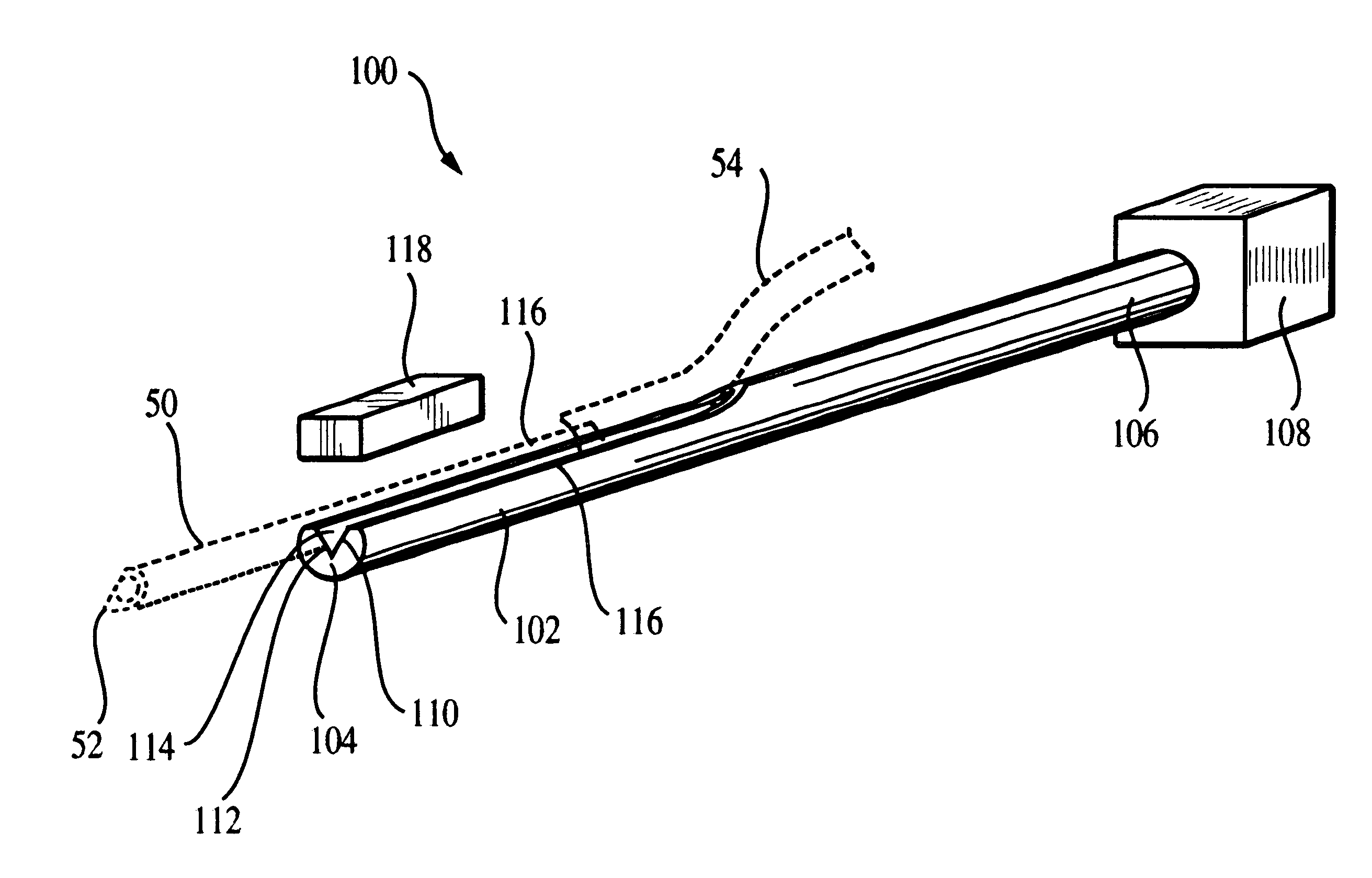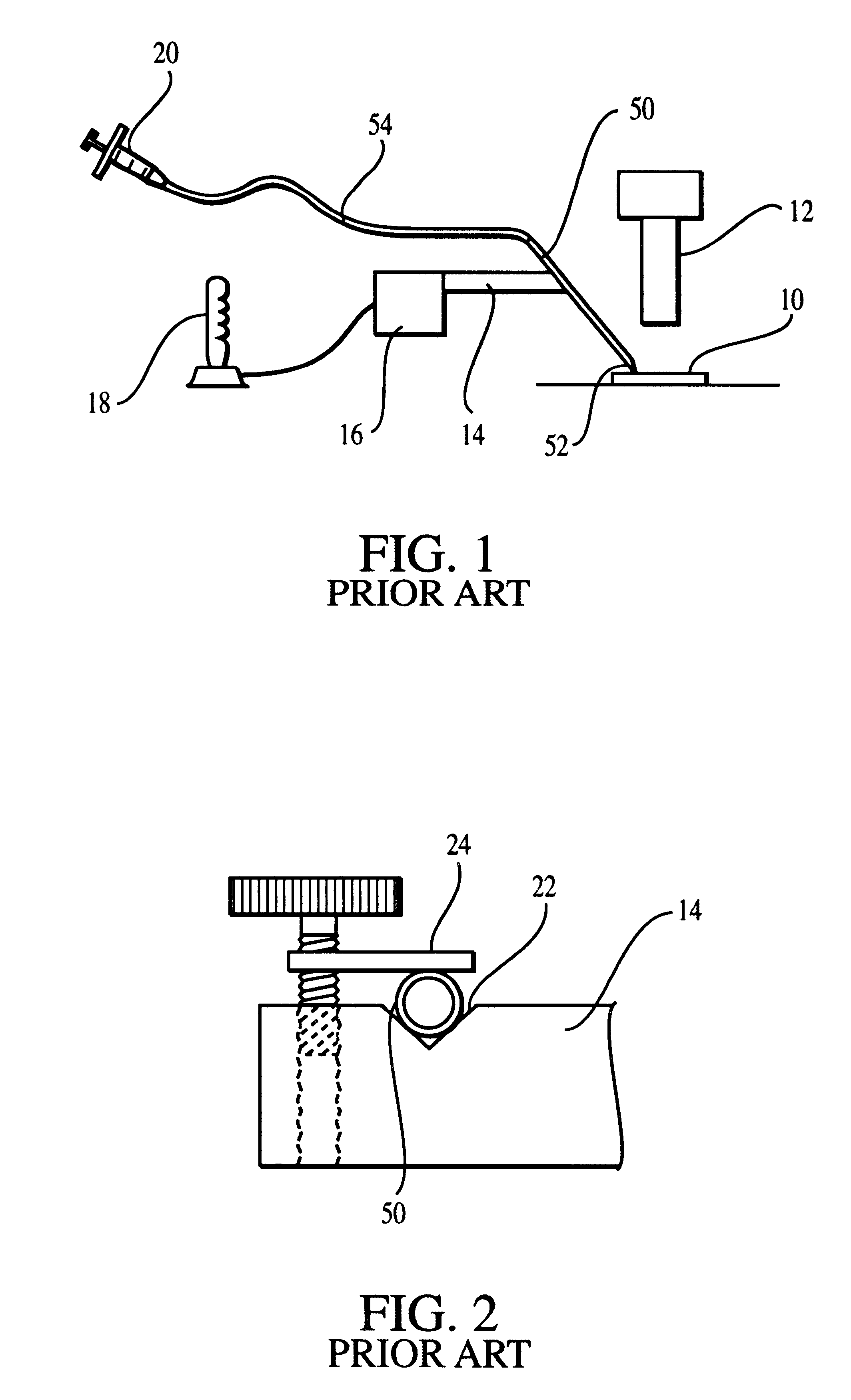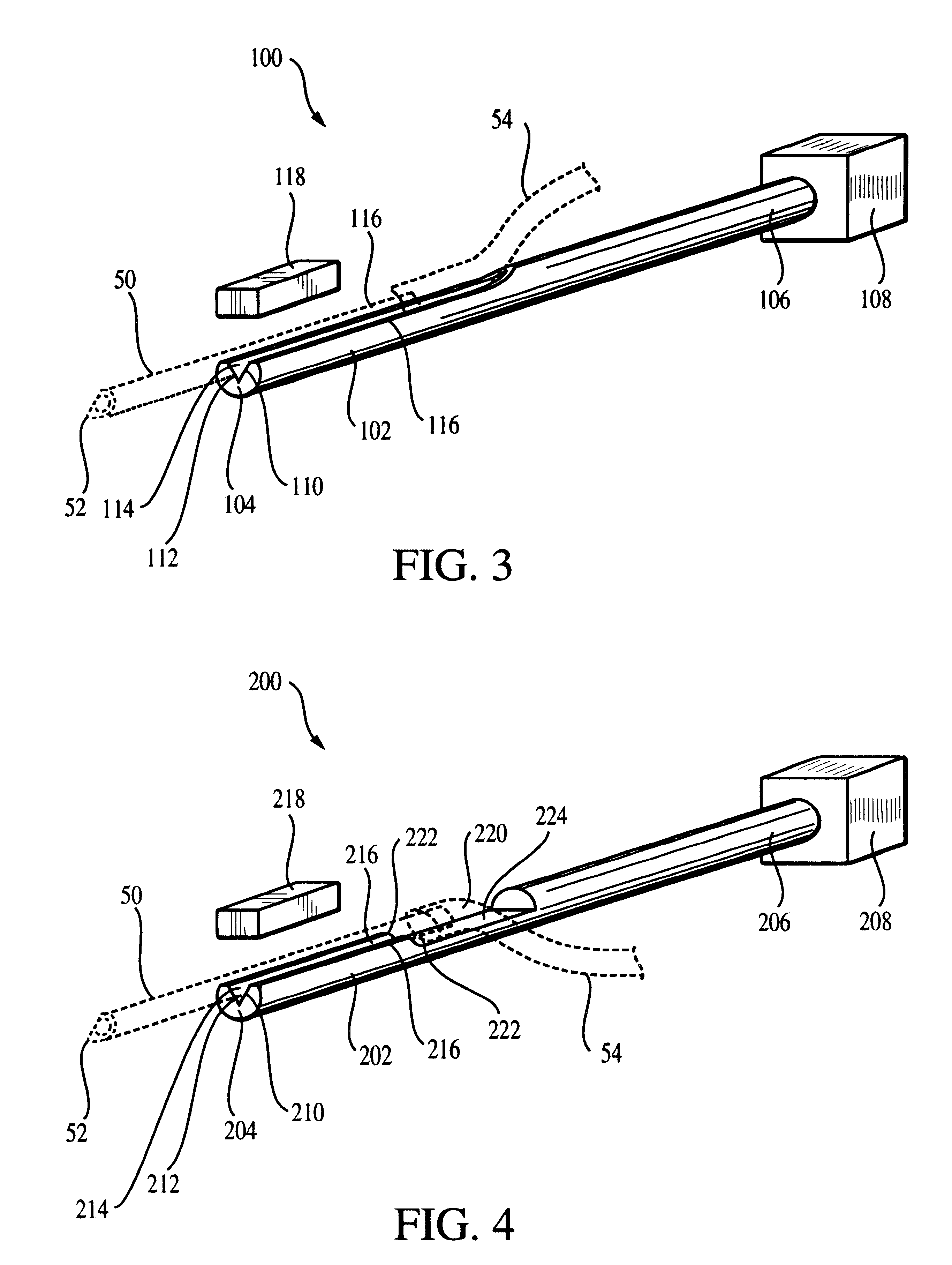Microtool mount
a technology for microtools and mounts, applied in the field of microtool mounts, can solve the problems of high inconvenience, delay, and high cost of clamping, and achieve the effects of facilitating egress of lead, and reducing the risk of slipping
- Summary
- Abstract
- Description
- Claims
- Application Information
AI Technical Summary
Benefits of technology
Problems solved by technology
Method used
Image
Examples
Embodiment Construction
Turning initially to FIG. 3, a first preferred version of the microtool mount is designated generally by the reference numeral 100. Since the structure and function of the microtool mount 100 is best understood when described with reference to a particular microtool, the microtool mount 100 will hereinafter be discussed in relation to its use with microcapillaries, and will thus be referred to as the capillary mount 100. However, it is emphasized that the mount 100 is not limited to use with microcapillaries and may be used with other microtools as well.
The capillary mount 100 includes an elongated finger 102 extending between a distal tip 104 and an opposing rod-like proximal end 106. The proximal end 106 can be rotatably journalled within a bearing 108 (which may take a variety of forms, with a simple block-like bearing 108 being illustrated here), or fastened within a micromanipulator, microforge, or the like. The finger 102 has a valley 110 defined along its length, with the val...
PUM
 Login to View More
Login to View More Abstract
Description
Claims
Application Information
 Login to View More
Login to View More - R&D
- Intellectual Property
- Life Sciences
- Materials
- Tech Scout
- Unparalleled Data Quality
- Higher Quality Content
- 60% Fewer Hallucinations
Browse by: Latest US Patents, China's latest patents, Technical Efficacy Thesaurus, Application Domain, Technology Topic, Popular Technical Reports.
© 2025 PatSnap. All rights reserved.Legal|Privacy policy|Modern Slavery Act Transparency Statement|Sitemap|About US| Contact US: help@patsnap.com



